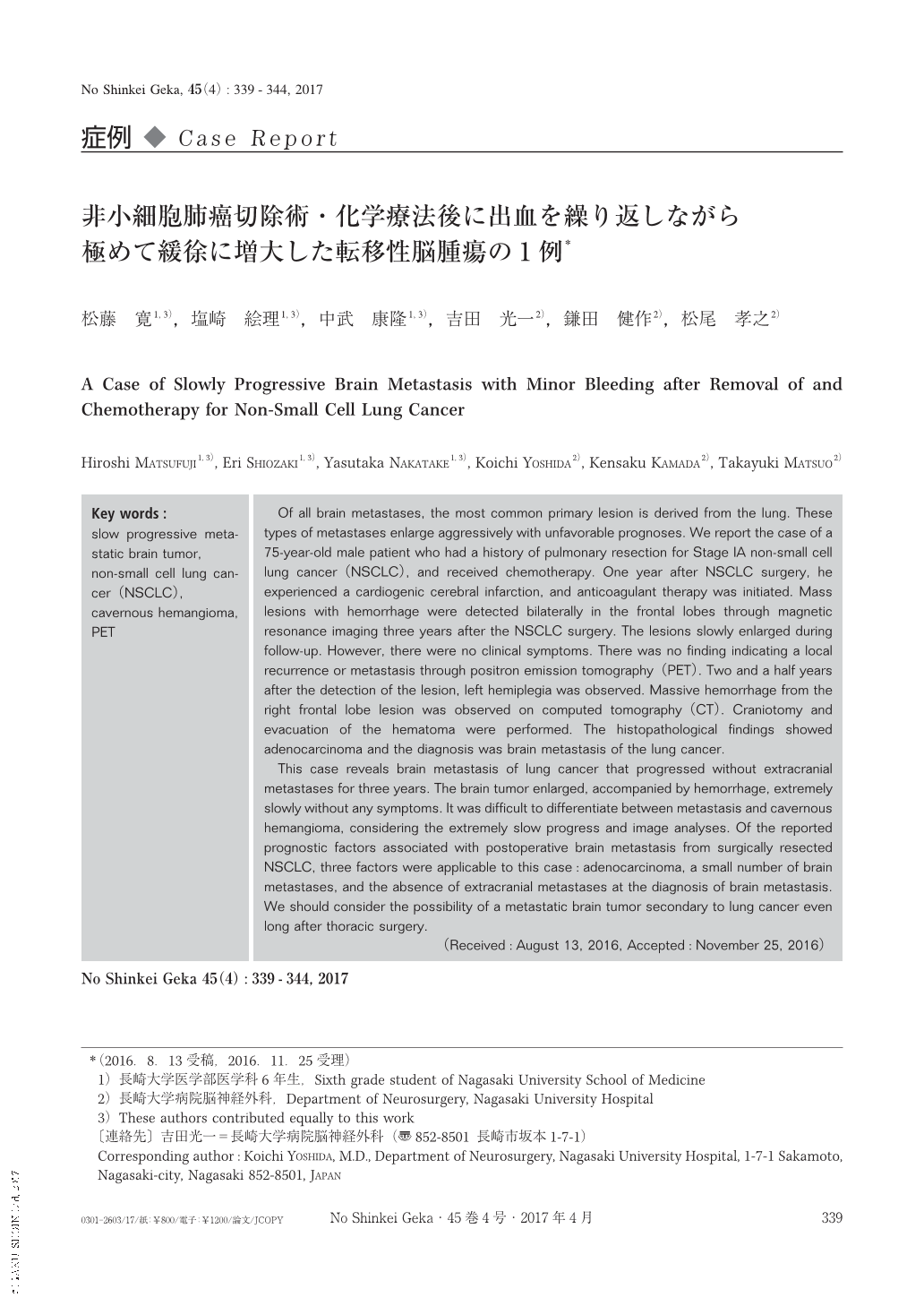Japanese
English
- 有料閲覧
- Abstract 文献概要
- 1ページ目 Look Inside
- 参考文献 Reference
Ⅰ.はじめに
転移性脳腫瘍の原発巣としては肺癌が最も多く,通常は脳転移がみられるとaggressiveな経過をたどり,生命予後が極めて悪くなる.今回われわれは,左上葉高分化肺腺癌に対して摘出術後化学療法を施行後,極めて緩徐に両側前頭葉に出血を伴ったmass lesionの増大が認められた1例を経験した.経過観察中に同病変に一致してmassiveな出血がみられたため,開頭術を施行し,病理所見でadenocarcinomaと診断した.本症例は肺癌脳転移にもかかわらず約2年半の経過で極めて緩徐に無症状のまま進行した症例であり,報告を行う.
Of all brain metastases, the most common primary lesion is derived from the lung. These types of metastases enlarge aggressively with unfavorable prognoses. We report the case of a 75-year-old male patient who had a history of pulmonary resection for Stage IA non-small cell lung cancer(NSCLC), and received chemotherapy. One year after NSCLC surgery, he experienced a cardiogenic cerebral infarction, and anticoagulant therapy was initiated. Mass lesions with hemorrhage were detected bilaterally in the frontal lobes through magnetic resonance imaging three years after the NSCLC surgery. The lesions slowly enlarged during follow-up. However, there were no clinical symptoms. There was no finding indicating a local recurrence or metastasis through positron emission tomography(PET). Two and a half years after the detection of the lesion, left hemiplegia was observed. Massive hemorrhage from the right frontal lobe lesion was observed on computed tomography(CT). Craniotomy and evacuation of the hematoma were performed. The histopathological findings showed adenocarcinoma and the diagnosis was brain metastasis of the lung cancer.
This case reveals brain metastasis of lung cancer that progressed without extracranial metastases for three years. The brain tumor enlarged, accompanied by hemorrhage, extremely slowly without any symptoms. It was difficult to differentiate between metastasis and cavernous hemangioma, considering the extremely slow progress and image analyses. Of the reported prognostic factors associated with postoperative brain metastasis from surgically resected NSCLC, three factors were applicable to this case:adenocarcinoma, a small number of brain metastases, and the absence of extracranial metastases at the diagnosis of brain metastasis. We should consider the possibility of a metastatic brain tumor secondary to lung cancer even long after thoracic surgery.

Copyright © 2017, Igaku-Shoin Ltd. All rights reserved.


